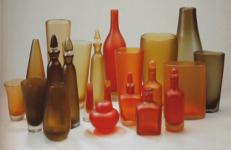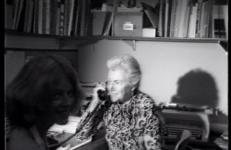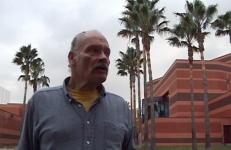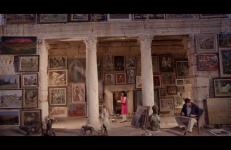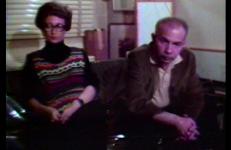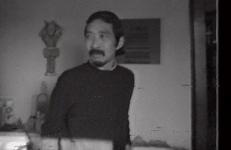At the heart of Alone With You is the notion of impassioned avarice, i.e. the kind of motivated acquisitiveness that drives both erotic desire and obsessive collecting.
Art Collectors
Part of the Long Beach Museum of Art’s Institute for Art and Urban Resources' Collectors of the Seventies series, this video focuses on the Betty Asher’s acquisitions. "I started collecting in 1939. I didn’t really start collecting per se," Asher says in this interview with David Ross, Virginia Dwan, and Alanna Heiss. "I bought things, and one morning I woke up and—all of a sudden—people were calling me a collector."
This video diary visits two sites that exhibited my visual works this past year, culminating at the VOLTA ART SHOW in N.Y.C., where I sold some paintings and a photograph.
The underling theme of the diary deals with some bloating, scarring and beefcake exposure while on the road to an acting gig where I'm scheduled to play a BI-SEXUAL, paraplegic in heat.
There are some in depth scenes of me working out the romance/sex routines with a young and attractive, male co-star. The all-girl crew appears to be getting off on the whole thing and I don't blame them!
Museum collections of various kinds are the object of artist Dana Levy's ongoing, consistent study in the past decade.
Shown at the Brooklyn Museum of Art, Brooklyn. The Real Art World Episodes explore the awkward social interaction of the studio visit. Before a work of art is chosen for exhibition, gallerists or curators visit the artist's studio to meet the artist and see the work in person. Consequently, the artist must convince the visitor of the value of their work. Like a confidence game or a first date, the power dynamics of the studio visit are wrought with miscommunication and ego clashes.
Shown at the Brooklyn Museum of Art, Brooklyn. The Real Art World Episodes explore the awkward social interaction of the studio visit. Before a work of art is chosen for exhibition, gallerists or curators visit the artist's studio to meet the artist and see the work in person. Consequently, the artist must convince the visitor of the value of their work. Like a confidence game or a first date, the power dynamics of the studio visit are wrought with miscommunication and ego clashes.
Shown at the Brooklyn Museum of Art, Brooklyn. The Real Art World Episodes explore the awkward social interaction of the studio visit. Before a work of art is chosen for exhibition, gallerists or curators visit the artist's studio to meet the artist and see the work in person. Consequently, the artist must convince the visitor of the value of their work. Like a confidence game or a first date, the power dynamics of the studio visit are wrought with miscommunication and ego clashes.
Shown at the Brooklyn Museum of Art, Brooklyn. The Real Art World Episodes explore the awkward social interaction of the studio visit. Before a work of art is chosen for exhibition, gallerists or curators visit the artist's studio to meet the artist and see the work in person. Consequently, the artist must convince the visitor of the value of their work. Like a confidence game or a first date, the power dynamics of the studio visit are wrought with miscommunication and ego clashes.
Part of the Long Beach Museum of Art’s Collectors of the Seventies series, this tape enters the home and art collection of Dorothy and Herbert Vogel. The Vogels live in a nondescript high-rise in the Yorkville section of New York City’s East Side. Their three and a half rooms serve as their museum for Larry Poons, Robert Morris, Philip Pearlstein, Robert Mangold, Sylvia Mangold, Dennis Oppenheim, Richard Nonas, John Tuttle, Sol Lewitt, Dan Graham, Richard Nonas, John Chamberlain, Christo, Donald Judd, Carl Andre, and Robert Ryman.
Interview by Douglas Davis.
As a well-known painter and collagist, teacher at the School of the Art Institute of Chicago and mentor to the Chicago Imagists, Ray Yoshida (1930-2009) had far reaching influence. In this interview, Yoshida offers a tour of his home, showing us the unique dolls, masks, trinkets and tattoo art from which he drew inspiration. Describing his own stylistic progression from the late 1950s to the early 1970s, Yoshida also talks about the collage aesthetic and persistence of visual complication in the Chicago Imagist style, demonstrating its various permutations by showing off his collection of works by former students at SAIC. A lover of curiosities, Yoshida also describes discussions he had with Chicago artist Roger Brown about opening a museum for their vast collections of oddities.
— Kyle Riley




